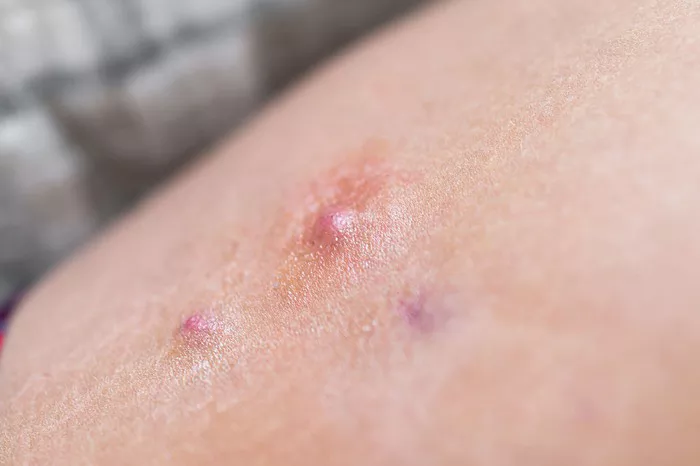Hidradenitis Suppurativa (HS) is a chronic inflammatory skin condition characterized by painful nodules, abscesses, and sinus tracts primarily affecting areas rich in apocrine glands, such as the axillae, groin, and buttocks. Long misunderstood and often misdiagnosed, HS has garnered increased attention in recent years due to its debilitating effects on patients’ quality of life. Among the many questions surrounding HS, one of the most debated is its association with Staphylococcus aureus (S. aureus), a bacterium commonly found on the skin and mucous membranes of humans. This article delves into the intricate relationship between HS and S. aureus, exploring the evidence, controversies, and clinical implications.
Understanding Hidradenitis Suppurativa:
HS was once considered a rare condition, but it is now recognized as a prevalent disorder affecting up to 1% of the population. It typically manifests during adolescence or early adulthood and follows a chronic, relapsing course. The exact etiology of HS remains elusive, but it is widely accepted to involve a combination of genetic predisposition, abnormal immune response, and environmental factors.
The Role of Staphylococcus Aureus in Hidradenitis Suppurativa:
S. aureus is a gram-positive bacterium known for its ability to cause a wide range of infections, from minor skin infections to life-threatening conditions such as sepsis and endocarditis. In the context of HS, S. aureus has long been suspected to play a role in disease pathogenesis. Several lines of evidence support this hypothesis:
1. Microbiological Studies: Numerous studies have detected higher levels of S. aureus colonization in lesional skin of HS patients compared to healthy controls. Cultures from abscesses and sinus tracts often yield S. aureus as the predominant organism, suggesting a potential role in disease exacerbation.
2. Immunological Mechanisms: S. aureus produces an array of virulence factors that can trigger and perpetuate the inflammatory response seen in HS. These include toxins, enzymes, and cell wall components that activate the innate immune system and promote tissue damage.
3. Genetic Associations: Certain genetic polymorphisms associated with HS susceptibility are also linked to impaired immune responses to S. aureus. For example, mutations in genes encoding antimicrobial peptides and pattern recognition receptors may predispose individuals to persistent colonization and heightened inflammatory reactions.
Despite this compelling evidence, the precise nature of the relationship between S. aureus and HS remains a subject of debate. Critics argue that S. aureus colonization may simply be a consequence of disrupted skin barrier function and inflammation rather than a primary driver of disease. Additionally, the heterogeneity of microbiological findings across studies and the lack of standardized sampling techniques have fueled skepticism regarding the significance of S. aureus in HS pathophysiology.
Clinical Implications and Treatment Considerations:
The potential association between HS and S. aureus has important implications for patient management and treatment strategies. While antibiotics targeting S. aureus, such as clindamycin and rifampicin, are commonly used in the management of HS, their efficacy remains variable, and concerns about antibiotic resistance and adverse effects persist. Furthermore, the role of topical or systemic antimicrobial therapy in altering the natural history of HS or preventing disease progression remains uncertain.
In recent years, there has been growing interest in alternative approaches targeting the dysregulated immune response in HS, such as biologic therapies directed against pro-inflammatory cytokines like tumor necrosis factor-alpha (TNF-α) and interleukin-17 (IL-17). These agents have shown promising results in reducing disease activity and improving quality of life in patients with moderate to severe HS, irrespective of S. aureus colonization status.
Conclusion
The relationship between Hidradenitis Suppurativa and Staphylococcus aureus represents a complex interplay between microbial colonization, dysregulated immunity, and tissue inflammation. While evidence suggests a potential role for S. aureus in disease pathogenesis, the exact mechanisms remain incompletely understood. Further research utilizing advanced microbiological and immunological techniques is needed to elucidate the contributions of S. aureus to HS and identify novel therapeutic targets. In the meantime, a multidisciplinary approach incorporating antimicrobial therapy, immunomodulation, and surgical intervention remains essential in the management of this challenging condition.
Related Topics:
Is Hidradenitis Suppurativa Linked to Lupus?



























